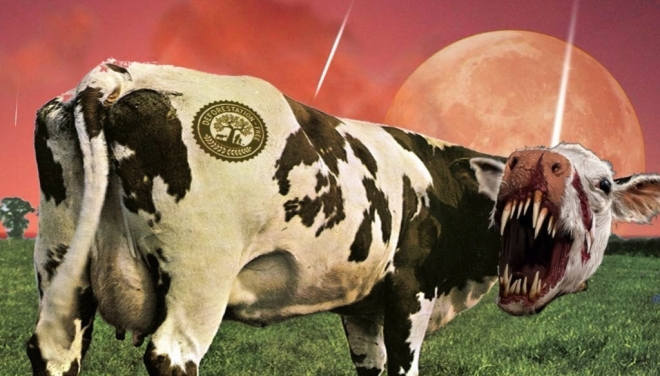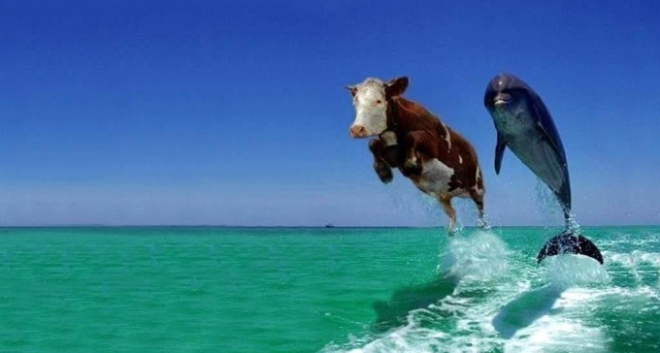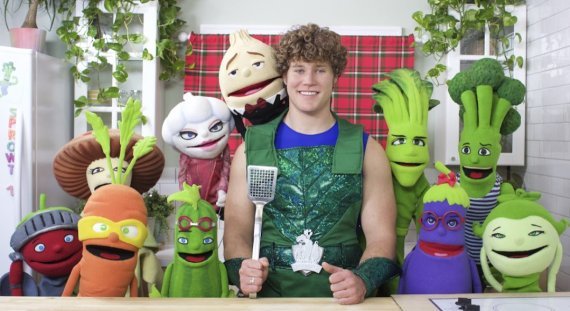
Many of us may have heard that farming and agriculture, or more specifically, cows and other farmed animals might cause methane emissions which may be harmful to the environment. However, after eating less red meat, finding an eye-opening paper entitled, “Mitigation of Greenhouse Gas Emissions in Livestock Production”, and watching a documentary called Cowspiracy, we finally had a crack (shameful pun!) in our case.
We discussed the topic with our colleagues at EBN and realized that most of us didn’t know much about it at all. This left many questions unresolved to those of us who hadn’t yet delved into the world of animal flatulence, such as; How bad are the emissions? What really causes the emissions?, and most importantly, What ideas have we thought of to deal with them? This article is intended to answer all of those burning (yet another pun!) questions, and focus our readers on what we consider to be the world’s leading and sometimes crazy solutions to what causes 29% of the world’s anthropogenic methane emissions (Global Methane Initiative, 2010).
![]()
Have you ever heard the term, “It’s better out of the attic than out of the basement”? Well regarding cows that may not be true. In fact, up to 95% of the emissions from cows comes from their mouths (shocking we know). In fact, cow’s flatulence only causes about 5% of their methane emissions (Scientific American, 2014).
How bad is methane? Although there is much more CO2 in the atmosphere, Methane is 30 times more potent as a heat trapping gas (Yvon-Durocher et al., 2014) making it much more harmful to our climate in smaller doses. Methane is basically the dutch oven of the atmosphere, acting as a insulating blanket around the earth trapping in radiation and heat. Livestock releases 3.1 gigatonnes of methane into the atmosphere every year. That is equivalent to the amount of CO2 the entire European Union releases annually, around 18% of the worldwide Greenhouse Gas emissions (Hristov et al., 2013). This is an issue affecting the planet that has been overlooked, and as demand increases, so will the silent but deadly problem.
So, how do we prevent our impending doom? Let’s have a look at what we believe are the four most interesting ideas around today.
IDEA 1: The Methane Backpack

Cows emit about 300 litres of methane per day to our environment (INTA, 2013). That is enough energy to keep a 100 litre fridge ice cold all day, which is a lot of energy when you consider the average cattle farm in the USA has 40 cows per farm (USDA Economic Research Service, 2017). That is why Argentina’s National Institute of Agricultural Technology, or INTA, has developed the Methane Backpack, or as the internet daftly named it, The Cow Fart Backpack.
The backpack works by using a tube inserted directly into the cows stomach to collect methane during the digestion process. The methane then accumulates in the inflatable backpack where it condenses and can be separated and stored in a larger tank for future use. This idea is so good, we are proposing it for human trial at Universities in Canada next year. Sign up below!
Although we initially scoffed at the idea, the benefits of this backpack seem promising; the backpack collects the cows methane and other emissions, stores the energy for future uses, and is portable enough to allow the cows to roam around almost naturally. The downside is that we do this by jamming a hose in its stomach, although they use anaesthetic, it is still something that we think will be frowned upon. Overall its an innovative idea that doesn’t smell too bad!
IDEA 2: The Seaweed Diet

We here at EBN undertook a week long seaweed diet to see what kind of effects this could have on us humans, but were disappointed to find from our doctors that drinking only seaweed beer was not an acceptable dieting strategy. Not only that, but our methane emissions seemed to have doubled. Luckily for us, seaweed is a lot more effective on cows than humans.
Cows have a very complex digestive system, and they have four stomachs to digest all their food. The largest stomach is called the rumen, where microorgansims called “methanogens” are found. These methanogens help cows digest all of their food in the rumen, but also convert it to methane gas, which is exhaled through the mouth. Not only is this bad for the environment, but it is extremely inefficient.
Scientists at James Cook University (Queensland, Australia) have been experimenting with a specific type of seaweed called Asparagopsis, which produces a compound called bromoform (CHBr3). Studies in (Kinley et al., 2016a) show that this chemical reacts with certain vitamins in the digestive system, which reduces methane produced by 50-70%. Not only that, only 2% has to be included in the entire diet for these effects to occur (Kinley et al., 2016b).
A big positive of this method (other than less methane production), is with more cattle eating seaweed, we can potentially have some extra grain for us too eat with fewer resources. One challenge is how we are going to grow all this seaweed? It is estimated that we would need 60,000 hectares of land just to supply enough seaweed to feed all the cattle in Australia (Bikker et al., 2016). That is a lot of land and resources.
IDEA 3: Genetic Alteration

Genome editing is the process of manually adding or removing DNA to an organism, and has been used for many years on many different kinds of animals, including cows! Gene selection and cattle breeding is used to obtain cattle with the most desirable characteristics, such as fertility and efficiency. But, what if there was a way to genetically alter cows to produce less methane?
Scientists at the Beef and Sheep Research Centre in Edinburgh, UK, have found a specific gene called (16S rRNA). Through numerous different experiments, it has been found that cows with a abundance of this particular gene are “high emitters” of methane, and cows with less amounts produce less methane (Wallace et al., 2015). Knowing which gene is associated with methane production can allow farmers to plan ahead, and choose cattle with low methane production.
Although genetically altered animals are not yet commercially available, this discovery opens lots of doors for farmers and scientists. The potential of modifying cows to be less harmful to the environment and more efficient is very exciting and could be happening in the near future. Don’t be surprised if you hear about genetically modified super cows coming to a superstore near you.
IDEA 4: Humans Go Vegan

As the happy group in the image above implies, veggies are good for you! And, yes sometimes when you dress them up in outfits, draw on a face and call them your friends, veggies can be down right creepy. Nonetheless, eating veggies and other earthly grown foods is good for us, can provide all the nutrients we need to survive, and can help to solve our problem. Combining this with reducing or abolishing consumption of meat would completely solve our problem, you know the one we’ve been complaining about this entire time.
According to the Oxford University, If we all went vegan by 2050 it would reduce food related emissions by 70%, free up 54% of agricultural land to be used as grasslands and forests or other crops, and prevent around 7 million deaths per year (BBC Future, 2016a). However, it isn’t all sunshine and rainbows. According to the same study, the main negative impact would be a health crisis in the developing world as they would struggle to find something that provides the benefits and micro nutrition as animal products. It would also strain all other crops and require further development to keep up with the new demand, which would increase emissions due to those crops, which is muy complicado (BBC Future, 2016b).
We can’t deny that going vegan would virtually solve our problems regarding livestock emissions, but change is not something the human race is good at. it seems more and more that to be human is to complain about problems we create for ourselves. Wait, are we saying that we are the problem?

After reviewing all of the facts around our poor four-legged neighbours, we cracked some buds, threw a few rib-eye steaks on the grill and though about our important mission here. As we took our first bites we found ourselves pondering how these evil cows had ruined so much of what we humans have worked so hard to achieve. It was around this time we had an epiphany, it wasn’t the cow’s fault at all, it was ours. We are the ones who mass produce and materialize these creatures. Are we able to survive without the resources that cattle provide for us? What kind of monsters are we? Some sort of Cowfartpocalypse Zombies?
As we threw on our leather jackets and boots to go throw the pigskin around after work (what… that could happen), we realized how silly it was to think that we were the problem. Besides, there was a sale on steaks at Costco and we needed more to drink… (laptop closed). Maybe it’s time to #Startthemoovement.
Thank you for reading our blog…
If you have any questions or comments feel free to leave them in the comments section.
————————————
For more information regarding the mitigation of livestock methane check out the paper that inspired this article, “Mitigation of Greenhouse Gas Emissions in Livestock Production”, here: http://www.fao.org/3/a-i3288e.pdf
This blog project was created for The University of Calgary as part of a course requirement. All content was used for educational purposes only.
————————————
References:
BBC Future, 2016. What would happen if the World Suddenly Went Vegetarian?. http://www.bbc.com/future/story/20160926-what-would-happen-if-the-world-suddenly-went-vegetarian/ (accessed 17.04.07).
Bikker, P., Krimpen, M., Wikselaar, P., Houweling-Tan, B., Scaccia, N., van Hal, J., Huijgen, W., Cone, J., Lopez-Contreras, A., 2016. Biorefinery of the green seaweed Ulva lactuca to produce animal feed, chemicals and biofuels. Journal of Applied Phycology 28:6, 3511-2525.
Global Methane Initiative, 2010. Global Methane Emissions and Mitigation Opportunities. http://www.globalmethane.org/documents/analysis_fs_en.pdf (accessed 17.04.07).
Henning Steinfeld, Pierre Gerber, Tom Wassenaar, Vincent Castel, Mauricio Rosales, Cees de Haan, FAO, 2006. Livestock’s Long Shadow Environmental issues and options;
Hristov, A., Oh, J., Lee, C., Meinen, R., Montes, F., Ott, T., Firkins, J., Rotz, A., Dell, C., Adesogan, A., Yang, W., Tricarico, J., Kebreab, E., Waghorn, G., Dijkstra, J., Oosting, S., 2013. Mitigation of Greenhouse Gas Emissions in Livestock Production;
INTA, 2013. el gas de las vacas puede alimentar un motor. http://intainforma.inta.gov.ar/?p=19084/ (accessed 17.04.07).
Kinley, R,. de Nys, R,. Vucko, M, 2016. The red macroalgae Asparagopsis taxiformis is a potent natural antimethanogenic that reduces methane production during in vitro fermentation with rumen fluid. Animal Production Science 56, 282-289.
Scientific American, 2014. Dog Spies: Well That Stinks! Reporters Blow Cow Farts Out of Proportion. https://blogs.scientificamerican.com/dog-spies/well-that-stinks-reporters-blow-cow-farts-out-of-proportion/ (accessed 17.04.07).
United States Department of Agriculture (USDA) Economic Research Service, 2017. Cattle Background. https://www.ers.usda.gov/topics/animal-products/cattle-beef/background.aspx/ (accessed 17.04.07).
Wallace, J,. Rooke, John,. McKain, N,. Duthie, C,. Hyslop, C,. Ross, D,. Waterhouse, A,. Watson, M,. Roehe, R, 2015. The rumen microbial metagenome associated with high production in cattle. BMC Genomics, 16:839.
Yvon-Durocher, G,. Allen, A,. Bastviken, D,. Conrad, R,. Gudasz, C,. St-Pierre, A,. Thanh-Duc, N,. Giorgio, P, 2014. Methane fluxes show consistent temperature dependence across microbial to ecosystem scales. Nature; 507, 488-491.
Images (In order of appearance): All images were used for educational purposes only
Image 2: https://www.youtube.com/watch?v=3lR0Jt5Lt7I
Image 3: http://occasionalplanet.org/2013/03/11/beefing-up-the-facts-on-global-warming/
Image 5: http://www.sciencealert.com/adding-seaweed-to-cattle-feed-could-reduce-methane-production-by-70
Image 6: http://wallpapercave.com/w/PtVIxSJ
Image 7: http://supersprowtz.com/raw/
————————————


Is this appealing and easy to understand for the average audience? You decide.
LikeLike
Great blog! I am still laughing…
LikeLike